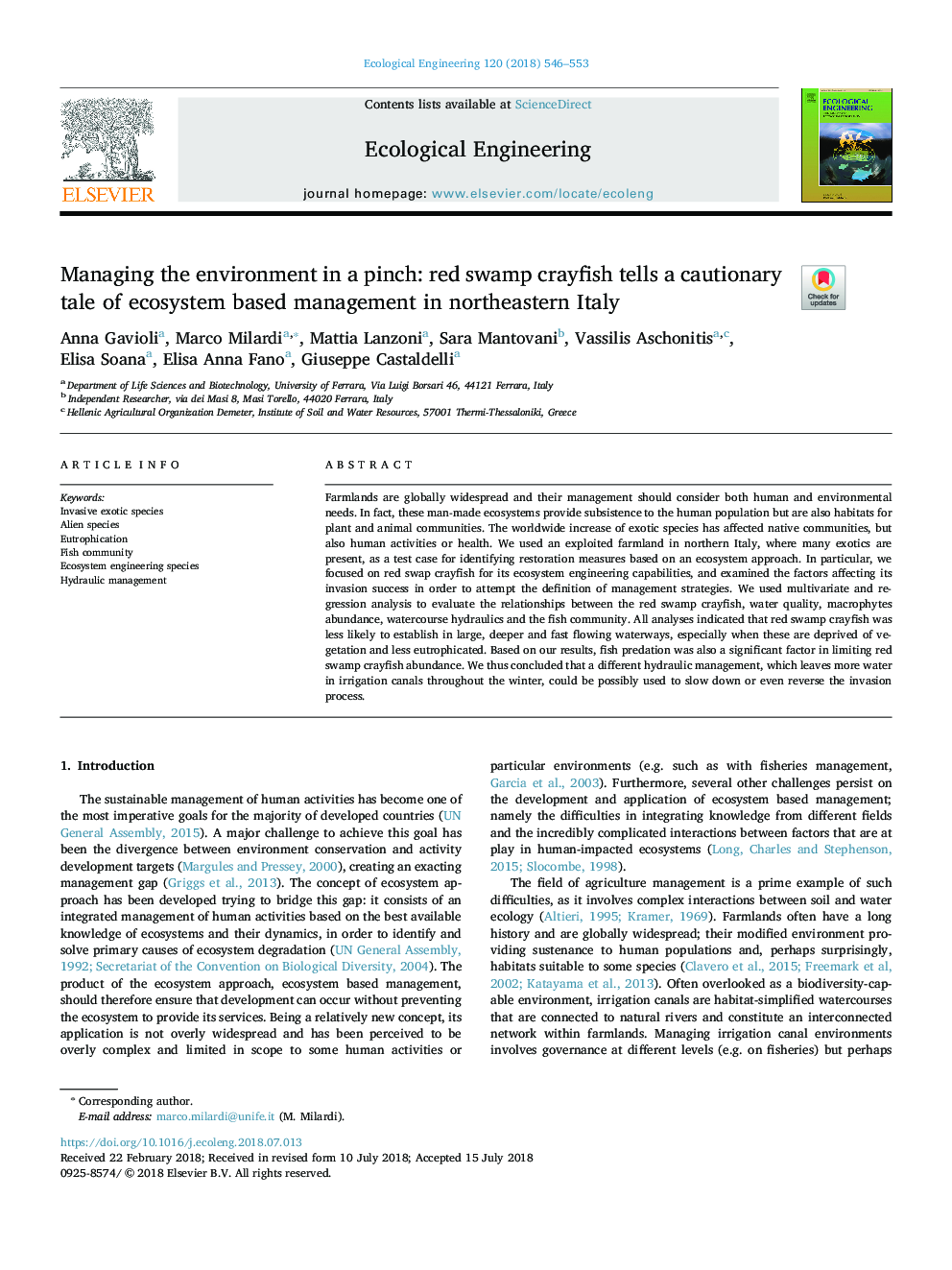| Article ID | Journal | Published Year | Pages | File Type |
|---|---|---|---|---|
| 8847863 | Ecological Engineering | 2018 | 8 Pages |
Abstract
Farmlands are globally widespread and their management should consider both human and environmental needs. In fact, these man-made ecosystems provide subsistence to the human population but are also habitats for plant and animal communities. The worldwide increase of exotic species has affected native communities, but also human activities or health. We used an exploited farmland in northern Italy, where many exotics are present, as a test case for identifying restoration measures based on an ecosystem approach. In particular, we focused on red swap crayfish for its ecosystem engineering capabilities, and examined the factors affecting its invasion success in order to attempt the definition of management strategies. We used multivariate and regression analysis to evaluate the relationships between the red swamp crayfish, water quality, macrophytes abundance, watercourse hydraulics and the fish community. All analyses indicated that red swamp crayfish was less likely to establish in large, deeper and fast flowing waterways, especially when these are deprived of vegetation and less eutrophicated. Based on our results, fish predation was also a significant factor in limiting red swamp crayfish abundance. We thus concluded that a different hydraulic management, which leaves more water in irrigation canals throughout the winter, could be possibly used to slow down or even reverse the invasion process.
Related Topics
Life Sciences
Agricultural and Biological Sciences
Ecology, Evolution, Behavior and Systematics
Authors
Anna Gavioli, Marco Milardi, Mattia Lanzoni, Sara Mantovani, Vassilis Aschonitis, Elisa Soana, Elisa Anna Fano, Giuseppe Castaldelli,
